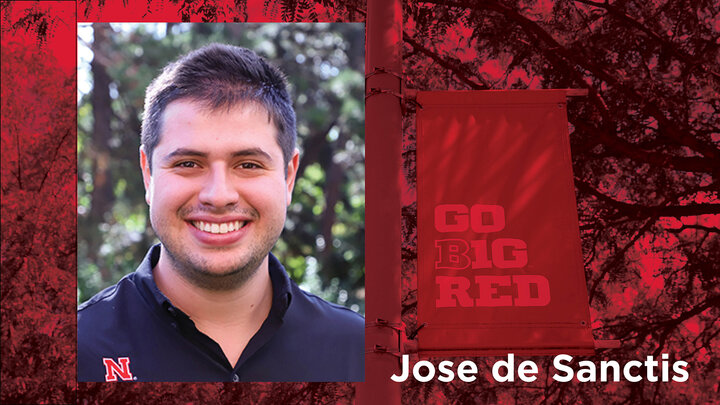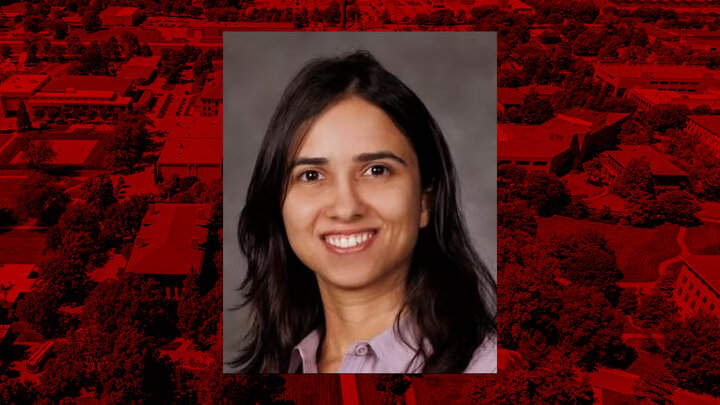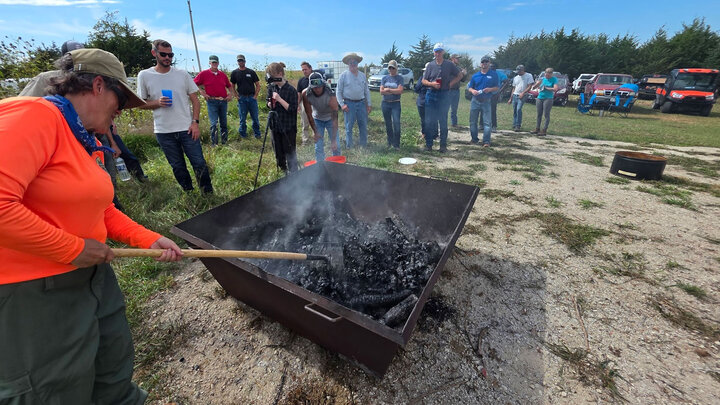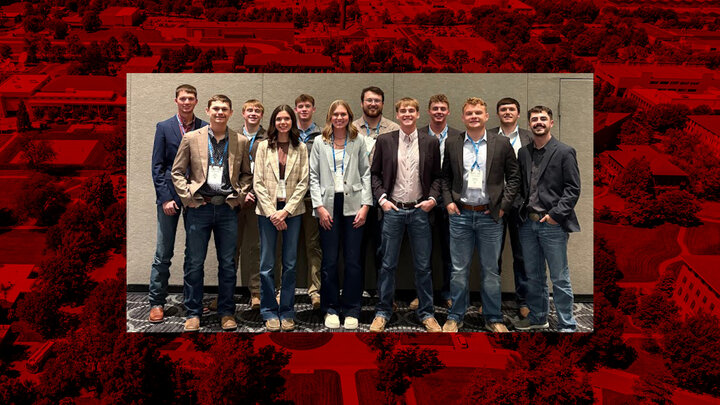Eight University of Nebraska–Lincoln agronomy and horticulture students took top honors at the 2019 North Central Weed Science Society Meeting held in Columbus, Ohio. The eight include graduate students Ethann Barnes, Jose Scarparo de Sanctis, Jesaelen Gizotti de Moraes, Shawn McDonald and Milos Zaric, and undergraduate students Ana Clara Gomes, Arthur Franco Teodore Duarte and Daniel de Araujo Doretto.
Barnes received the Outstanding Graduate Student Award.
This award recognizes an outstanding graduate student who is an active NCWSS student member and a contributor to the field of weed science through extension, research and teaching. Students are judged on their involvement in NCWSS and other activities in weed science such as: extension, teaching, research publications and other presentations of research, academic records, and honors and awards.
Barnes’ research focused on understanding and controlling glyphosate resistant common ragweed in soybean during his master’s degree and on weed control and gene flow in popcorn for his doctoral degree.
He graduated with his doctoral degree in December 2019 and is a biology data management scientist for Greenlight Biosciences in Research Triangle Park, North Carolina. His advisor was Amit Jhala, associate professor of agronomy and horticulture and Nebraska Extension weed management specialist.
de Sanctis received second-place in the graduate student poster presentation. His poster was titled “Effect of Late Season Herbicide Application on Seed Production of Glyphosate-resistant Palmer amaranth on Dicamba-resistant Soybean.”
He also earned second-place in the graduate student research video.The title of his video was “Critical Time of Glyphosate-resistant Palmer amaranth Removal Affected by Pre Emergence Herbicides in Dicamba-resistant Soybean.”
His research focus is on improving weed management strategies on herbicide-resistant weeds working with different approaches for reducing weed pressure and yield penalties associated with the presence of herbicide-resistant weeds. de Sanctis is advised by Jhala.
Moraes, a doctoral student advised by Greg Kruger, received first-place in the graduate student research video contest and second place in the graduate student poster contest.
Her video titled “Impact of Drift Reducing Agents in Dicamba Tank-Mixtures on Pattern Distribution” described her research of evaluating the impact of two main groups of drift reducing agents tank-mixed with dicamba on liquid physical properties such as density, viscosity, dynamic surface tension, dynamic contact angle and the consequential result on the pattern distribution.
Moraes poster titled “Management of Troublesome Weeds in XtendFlex Soybeans.” XtendFlex Soybeans is the first technology with tolerance to dicamba, glyphosate and glufosinate herbicides. A drift reducing agent (DRA) may be required for those applications. However, no information can be found in literature on how these herbicides and adjuvants will interact when applied in combination as well as their effectiveness. The objectives of this research were to observe the response of troublesome weeds to tank-mixtures containing two or more herbicide sites of action as affected by DRAs.
McDonald received second-place in the graduate student Extension talk video contest.
His research involves evaluating the effect of row spacing in dicamba-resistant soybean on control of glyphosate-resistant Palmer amaranth and the use of overlapping residual herbicides in dicamba-soybean on control of glyphosate-resistant Palmer amaranth. He also works on the Nebraska stakeholder’s survey of weed management for Extension.
McDonald is advised by Jhala.
Zaric received first-place in the graduate student Extension talk video contest. His video title was “The Weed Zapper – Additional Tool for Integrated Weed Management.”
Zaric’s research focuses on the overreliance on herbicide programs that started after the introduction of herbicide tolerant crops and resulted in increased instances of herbicide resistant weeds. Additional tools are necessary with the limited options for weed control. His video focused on introducing additional systems that potentially could be used in either organic or conventional production.
Zaric is a master’s student advised by Kruger.
Undergraduate student interns from Brazil and advised by Kruger received awards in the undergraduate poster contests.
Gomes received second-place in the undergraduate agronomic crops II and weed biology, ecology and management poster contest. Her poster title was “Use of Glufosinate, Glyphosate and 2,4-D Applied Alone or in Combination for Weed Management.”
Duarte received second-place in the undergraduate weed biology, ecology and management poster contest. His poster title was “Weed Control from Dicamba plus Glufosinate as Affected by Drift-reducing Adjuvants and Carrier Volume.”
Doreto placed second in the undergraduate student poster contest agronomic crops I & II. His poster was titled “"Interactions of Clethodim and Dicamba on Glyphosate-resistant Volunteer-Corn Control.”
The 74th NCWSS Annual Meeting took place December 10-13.
Ethann Barnes
Jose de Sanctis
Jesaelen Gizotti de Moraes Simão
Shawn McDonald
Milos Zaric




